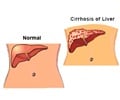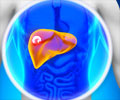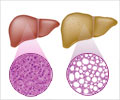Alcohol Consumption And Metabolic Factors when combined can Increase The Risk Of Severe Liver Disease exponentially found a new study

‘Risk assessment in the general population can be improved to detect early risk of progressive liver disease.’





To investigate, Fredrik Åberg, MD, PhD, of the Helsinki University Hospital in Finland, and his colleagues studied which metabolic factors best predict severe liver complications. Their analysis included 6732 individuals without liver disease who participated in the Finnish population-based Health 2000 Study (2000-2001). The researchers analyzed follow-up data on liver-related hospital admissions, mortality, and liver cancer from national registers until 2013.Eighty-four individuals experienced a severe liver event during follow-up. Factors predictive of liver events were older age, female gender, alcohol use, diabetes, LDL cholesterol, and insulin resistance.
Among individuals who consumed higher amounts of alcohol (average alcohol use 210 g/week for men, 140 g/week for women), diabetes was the only significant predictor. Among those who consumed less or no alcohol, older age, alcohol use, smoking, abdominal obesity, LDL cholesterol, and insulin resistance were significant predictors.
Dr. Åberg noted that alcoholic liver disease (ALD) and non-alcoholic liver disease (NAFLD) are currently considered separate entities, distinguished from each other by an arbitrary threshold of average alcohol intake.
This diagnostic approach assumes that alcohol intake does not affect the course of NAFLD and that the metabolic syndrome--the hallmark of NAFLD--is not a factor in ALD. This study reveals that alcohol is a relevant risk factor even when alcohol consumption is within the limits currently used to separate NAFLD from ALD.
Advertisement
"Our study brings support to this suggestion and calls for a more holistic approach, where alcohol use and metabolic factors are taken into account at the same time in order to identify individuals with a high risk for severe liver complications." For a comprehensive liver-risk assessment, lipid abnormalities, abdominal obesity, insulin resistance, diabetes, and alcohol use should all be considered at the same time.
Advertisement
Source-Eurekalert















